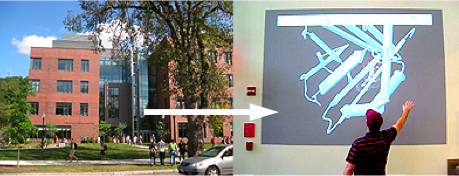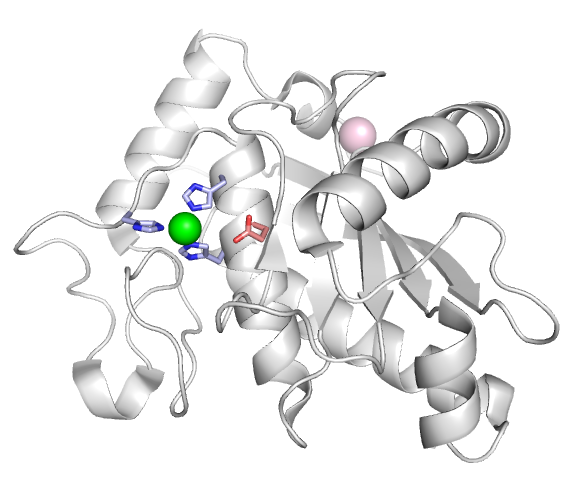Molecular Playground/ADAM13
From Proteopedia
| Molecular Playground at the University of Massachusetts. MOVIE. |
ADAM13 is one of the CBI Molecules being studied in the University of Massachusetts Amherst Chemistry-Biology Interface Program at UMass Amherst and on display at the Molecular Playground.
|
ADAM13 is a transmembrane protein containing a metalloprotease domain (gray), and controls cell motility by shedding adhesion molecules from the cell surface. ADAM13 also exhibits adhesive activity through it's disintegrin (blue) and cysteine rich (purple) domains (EGF-like repeat, cyan).
Molecular Playground banner: ADAM13 reduces cell adhesion to promotes cell motility.
Metalloprotease domain
Most ADAMs contain the canonical metalloprotease active site sequence (HExxHxxGxxH) with a catalytic glutamate residue (shown below in red) three Histidine residues (blue) that coordinate a zinc ion (green). In addition to cell adhesion molecules, ADAMs are known to cleave a variety of other biologically important proteins present at the cell surface, such as signaling receptors and their ligands to either activate or inactivate multiple signaling pathways. The Alfandari Lab currently studies the role of the meltrin subfamily of ADAMs in early embryo development.
The Molecular Playground interactive projection in the Integrated Sciences Building at the University of Massachusetts, Amherst, USA, shows the molecular display that you see when you press the button above. This is only one of a series of modules that are shown. Instructions for authoring modules that display molecules in Molecular Playground are available.



